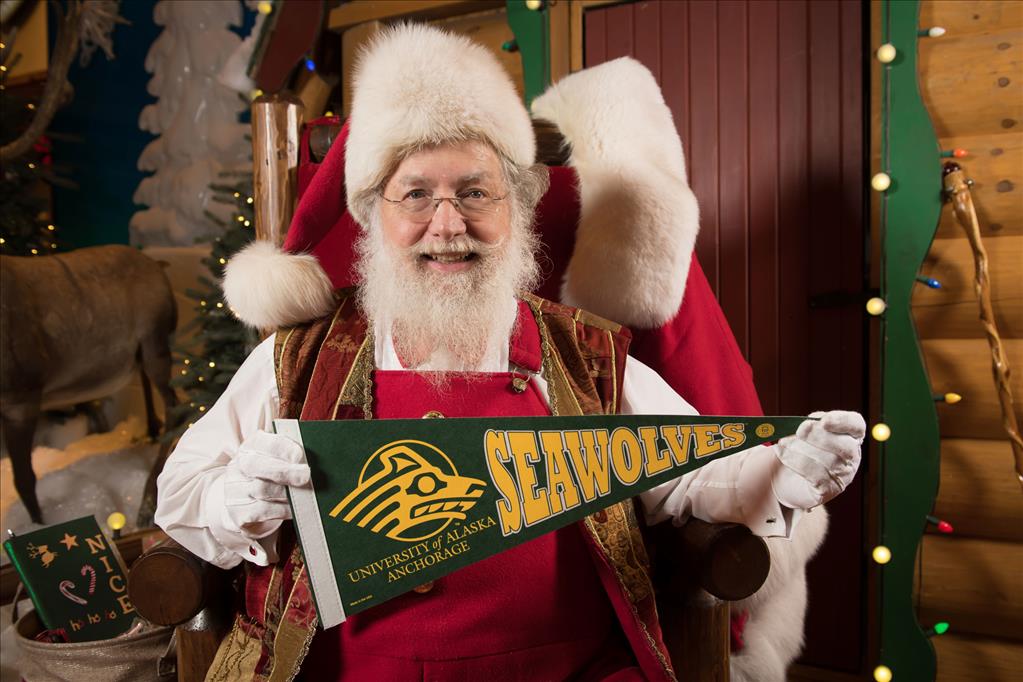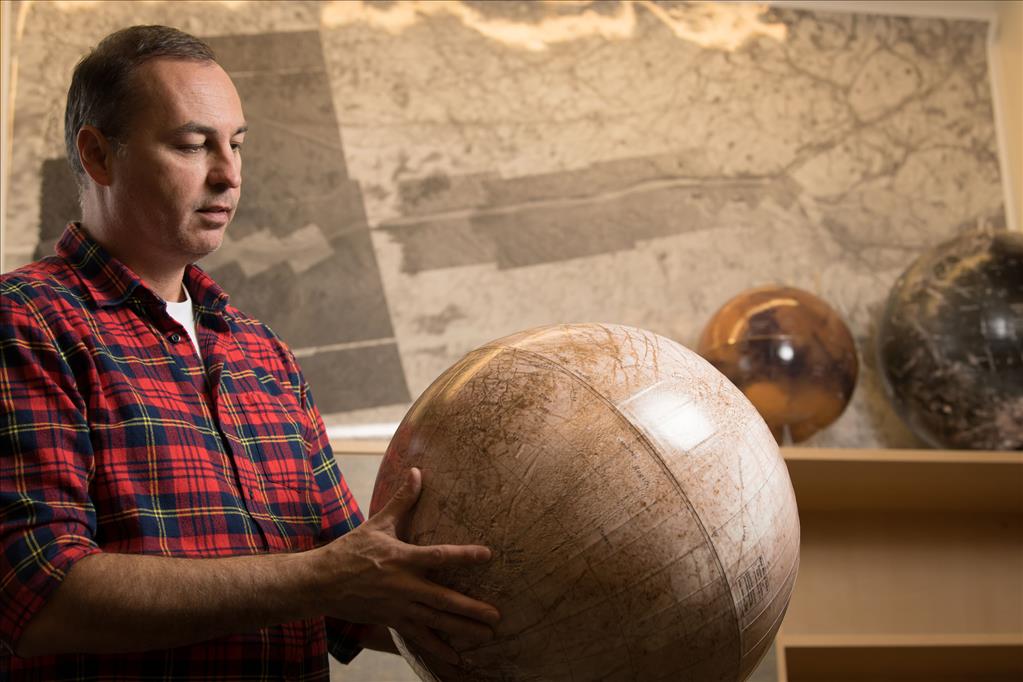Anthropology senior and all-star sprinter continues to break ground
by Matt Jardin |

Nicholas Taylor is a record-holding sprinter for UAA's track and field team and a senior majoring in anthropology with an emphasis on archaeology. Earlier this summer, Taylor partook on his first archaeological dig at the historic Swan Lake, the oldest identified human establishment in North America, estimated to be around 14,200 years old. (Photo courtesy of UAA Athletics)
In situ is a Latin phrase that literally translates to "in position," a term commonly used when talking about artifacts found on archaeological sites.
Before deciding to major in anthropology and partaking in his first archaeology dig, Seawolf track and field sprinter Nicholas Taylor wasn't really one for remaining in situ.
Originally from Victoria, British Columbia, Taylor was always a gifted athlete. Aside from a natural interest in participating in sports, his dad was a cross country coach and the high school he attended was renowned for their athletic programs.
It wasn't long before Taylor attracted the attention of a dedicated coach who pushed him to take his track and field training more seriously.
"My coach said, 'Hey, you're actually pretty good. If you put in some training you could really make something for yourself.' It's pretty cool to think that maybe I am good at this," he recalls.

(Photo courtesy of UAA Athletics)
With new inspiration and a more focused training regimen, Taylor began to see a drastic improvement in his performance. Toward the end of high school he began breaking records, which then gave way to attracting college athletic scholarships. To this day, he still holds the Victoria record for the 200 meter sprint.
At first, Taylor decided to stay close to home by accepting an offer to attend the University of Victoria. During that first year of college, he reconnected with Adam Commandeur and Jamie Ashcroft — friends he raced while in high school who had both moved to Anchorage and joined the Seawolf track and field team.
Upon hearing the great things Commandeur and Ashcroft had to say about the program, Taylor decided that UAA was where he needed to be, too. Taylor's friends put him in touch with men's track and field coaches Ryan McWilliams and Michael Friess, who quickly offered him an athletic scholarship to UAA.
"UVic was more of a distance program and that's what they were good at, but I was the only sprinter on the whole team," Taylor shares. "UAA had a more well-rounded program and the coaches were knowledgeable in all aspects of track and field. It was a great opportunity."
In the three years since that initial offer, Taylor has broken several records and personal bests. This most recent season at the Great Northwest Athletic Conference, his team finished both the indoor 4-by-400 meter relay with the second-fastest time in UAA history and the outdoor 4-by-400 meter relay with UAA's fifth-best time.
"Those were a massive highlight, and getting to enjoy that with my teammates was pretty exciting," Taylor says.
Equally exciting to finding the right athletic program is finding the right college major. After briefly majoring in business and then international studies, Taylor chose to become an anthropology major with an emphasis on archaeology based on the enlightening experience he had in an introductory course.
"I thought it was fascinating — learning about our past and the history of the human species," explains Taylor. "I wanted to make sure I took a degree I enjoyed and found interesting, and anthropology fit that bill."

The 10-person dig team consisting of students from UAA, UAF and one from Hawaii Pacific University, was led by Gerad Smith, UAA anthropology adjunct professor and UAF doctoral student. (Photo courtesy of Nicholas Taylor)
Earlier this summer, Taylor participated on his first archaeological dig in Swan Point, consisting of a 10-student team led by Gerad Smith, UAA anthropology adjunct professor and UAF doctoral student. In the past, partaking on digs was something Taylor was unable to do due to scheduling conflicts with the track and field season.
Located on Athabascan land in the Tanana River Valley just north of the Delta Junction, the Swan Point site was discovered by Alaskan archaeologist and Smith's mentor Chuck Holmes in the '90s. The site is estimated to be around 14,200 years old, making it the oldest identified human establishment in North America and providing strong evidence that prehistoric humans migrated from Siberia to Alaska via land bridge. Also found at Swan Point were mammoth ivory remains, strongly suggesting interaction between early humans and mammoths.
Situated just south of Holmes' original discovery, the area of Taylor's inaugural dig isn't as ancient, estimated to be between 1,800 to 2,600 years old. Believed to be an Athabascan hunting camp, Smith's dig has unearthed more than 1,200 artifacts. One of those artifacts was a blade core - used to create tools for hunting, scraping hides or making clothes - found by Taylor. The discovery was a big deal in every sense of the word.

Taylor holds up the blade core he unearthed after three weeks on the dig. Blade cores were used by early humans to create tools for hunting, scraping hides or making clothes. (Photo courtesy of Nicholas Taylor)
"Some of these artifacts are very small, like the size of your fingernail. The blade core I found is about the size of my fist," he exclaims. "To find something that size when you've been digging for three weeks is pretty exciting."
It's easy to understand Taylor's enthusiasm. To ensure that no artifact is overlooked, the digging process is painstakingly slow and methodical. On this dig, each member on the team was assigned a 1-by-2 meter section of the 25 square meter site and could only dig down five centimeters at a time. If no artifacts are found in situ, the dug up dirt is placed in a mesh screen and carefully sifted through again, just to be sure.
Despite choosing a field of study that emphasizes looking to the past, Taylor is thrilled at what lies ahead. With his first official archaeological dig under his belt, Taylor will receive his B.A. in anthropology this December. Afterward, the sprinter has the remaining year of eligibility to participate in track and field at UAA. Who knows, maybe he'll break a few more records before he's done.
"It's an amazing experience being a college athlete," he says. "Now I'm focused on the next stage of my life and what I'm going to do for a career. Archaeology is definitely very exciting and I'll try to do as much as that as I can."

Taylor's first archaeological dig took place at the historic Swan Point site, located on Athabascan land in the Tanana River Valley just north of the Delta Junction. (Photo courtesy of Nicholas Taylor)
Written by Matt Jardin, UAA Office of University Advancement
 "Anthropology senior and all-star sprinter continues to break ground" is licensed under a Creative Commons Attribution-NonCommercial 4.0 International License.
"Anthropology senior and all-star sprinter continues to break ground" is licensed under a Creative Commons Attribution-NonCommercial 4.0 International License.














